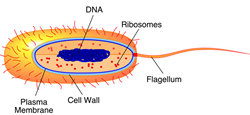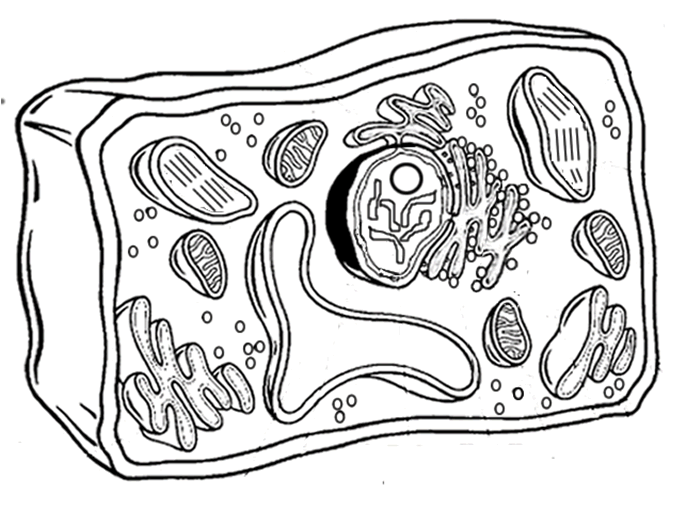The Cell Overview
Objectives
List the scientists who contributed to our knowledge of the cell
List the 3 components of the cell theory
Compare prokaryote to eukaryote cells
Label a plant and animal cell
Know the functions of all cell organelles
Early Contributions
Robert Hooke - The first person to see cells, he was looking at cork and noted that he saw "a great many boxes. (1665)
Anton van Leeuwenhock - Observed living cells in pond water, which he called "animalcules" (1673)
Theodore Schwann - zoologist who observed that the tissues of animals had cells (1839)
Mattias Schleiden - botonist, observed that the tissues of plants contained cells (1845)
Rudolf Virchow - also reported that every living thing is made of up vital units, known as cells. He also predicted that cells come from other cells. (1850 )
The Cell Theory
1. Every living organism is made of one or more cellss.
2. The cell is the basic unit of structure and function.
3. All cells arise from pre-existing cells.
*Why is the Cell Theory called a Theory and not a Fact?
Cell Features
Ribosomes - make protein for use by the organismCytoplasm - jelly-like goo on the inside of the cell
DNA - genetic material
Cytoskeleton - the internal framework of the cell
Cell membrane - outer boundary of the cell, some stuff can cross the cell membrane.
Types of Cells
Prokaryotic Cells
Prokaryotes are very simple cells, probably first to inhabit the earth.
Prokaryotic cells do not contain a membrane bound nucleus.
Bacteria are prokaryotes.
DNA of bacteria is circular.
The word "prokaryote" means "before the nucleus"
Other features found in some bacteria:
Flagella - used for movement
Pilus - small hairlike structures used for attaching to other cells
Capsule - tough outer layer that protects bacteria, often associated with harmful bacteria
Eukaryotic Cells
Eukaryotic cells are more advanced cells. These cells are found in plants, animals, and protists (small unicellular "animalcules").
The eukaryotic cell is composed of 4 main parts:
cell membrane - outer boundary of the cell
cytoplasm - jelly-like fluid interior of the cell
nucleus - the "control center" of the cell, contains the cell's DNA (chromosomes)
organelles - "little organs" that carry out cell functions
Cell Structures
The Nucleus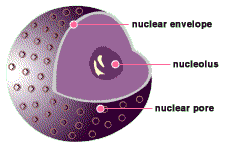
- Usually found at center of cell
- Has a nuclear membrane ;nuclear pores
-
Contains cell's DNA in one of 2 forms
- chromatin- DNA bound to protein (non-dividing cell)
- chromosomes- condesed structures seen in dividing cell
- Also contains an organelle called nucleolus - which makes the cell’s ribosomes
 Mitochondria
Mitochondria
Energy center or "powerhouse" of the cell. Turns food into useable energy (ATP)
Ribosome - make protein, located on the rough endoplasmic reticulum and throughout the cytoplasm
 Golgi Apparatus - processing, packages and secretes proteins; proteins are transported in vesicles
Golgi Apparatus - processing, packages and secretes proteins; proteins are transported in vesicles
 Lysosome - contains digestive enzymes that can break things down, also called a "suicide sac" because the rupturing of the lysosome will cause the cell to destroy itself
Lysosome - contains digestive enzymes that can break things down, also called a "suicide sac" because the rupturing of the lysosome will cause the cell to destroy itself
Endoplasmic Reticulum - Transport, "intracellular highway". Ribosomes are positioned along the rough ER, protein made by the ribosomes enter the ER for transport.
Smooth ER - no ribosomes
Rough ER - contains ribosomes
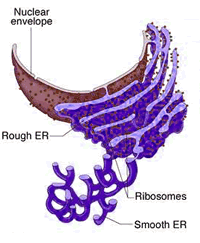
Cytoskeleton - helps maintain the cells shape; supports the cell and aids in cell movement\
microtubules / microfilaments / centrioles
microtubules are used to build cilia and flagella
Vacuole - storage area for water and other substances, plant cells usually have a large central vacuole
Protein Production
The cell is like a factory. Its product is protein which goes to body to serve different functions.
- DNA has instructions to build; protein
- These instructions are sent to ribosomes
- The ribosomes build protein and send it through ER
- The proteins are delivered to& golgi where they are completed and tagged for export outside the cell
 Plant Cell
Plant Cell
Has all the components of animal cells with some additional structures.
Chloroplast - Uses sunlight to create food, photosynthesis (only found in plant cells), contains green pigment chlorophyll
Cell Wall - outside the cell membrane of plants and some bacteria, the cell wall serves as support
Central vacuole - large water container, helps maintain a turgor (stiffness) in the plant
Animal Cell versus Plant Cell

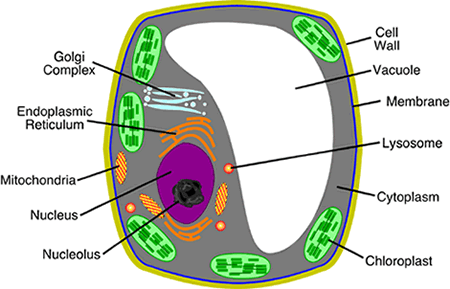
ORGANELLES WITH DNA
- The Mitochondria and Chloroplasts have their own DNA
- ENDOSYMBIOSIS THEORY - eukaryotic cells evolved from the engulfing of bacteria cells, thus creating additional cell parts
CELL MEMBRANE

- Function: to regulate what comes into the cell and what goes out
- Composed of a double layer of phospholipids and proteins
![]()
![]()
| CELL STRUCTURE | LOCATION | DESCRIPTION | FUNCTION |
|
Cell Wall |
Plant, Fungi, & Bacteria, but not animal cells |
|
|
Cell Membrane |
All cells |
|
|
|
Nucleus |
All cells except prokaryotes |
|
|
Nuclear membrane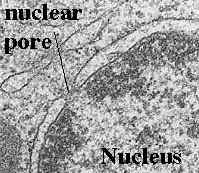 |
|
|
|
|
Cytoplasm |
All cells |
|
|
|
Endoplasmic reticulum (ER)  |
|
|
|
Ribosome |
All cells |
|
|
Mitochondrion |
All cells except prokaryotes |
|
|
Vacuole |
Plant cells have a single, large vacuole |
|
|
Lysosome |
Plant - uncommon |
|
|
| Chloroplast |
Plants and algae |
|
|
nucleolus |
All cells except prokaryotes |
|
|
|
Golgi Apparatus |
All cells except prokaryotes |
|
|
Cilia |
Animal cells, Protozoans |
|
|
Flagellum |
Bacterial cells & Protozoans |
|
|
Centrioles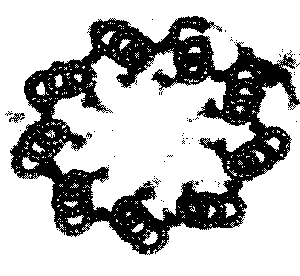 |
Animal cells |
|
|
Cytoskeleton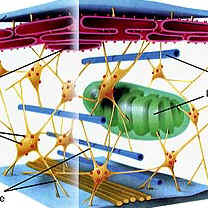 |
All cells |
|
|
|
|
Cells |
|
|||||||||||||||||||||||||||||||||||||||||||||||||||||||||
Animal Cell Coloring
I. Directions: Color each part of the cell its designated color.
|
Cell Membrane(light brown) |
Nucleolus (black) |
Mitochondria (orange) |
|
Cytoplasm (light yellow) |
Golgi Apparatus (pink) |
Lysosome (purple) |
|
Nucleoplasm (pink) |
Flagella (red/blue striped) |
Microtubules (dark green) |
|
Nuclear Membrane(dark brown) |
Rough Endoplasmic Reticulum (dark blue) |
Ribosome (red) |
|
Smooth Endoplasmic Reticulum( light blue) |

II. Briefly describe the function of the cell parts.
1. Cell membrane ______________________________________________
2. Endoplasmic Reticulum _________________________________________
3. Ribosome ____________________________________________________
4. Golgi Apparatus ____________________________________________________
5. Lysosome ____________________________________________________
6. Microtubule ____________________________________________________
7. Mitochondria ____________________________________________________
8. Nucleus ____________________________________________________
